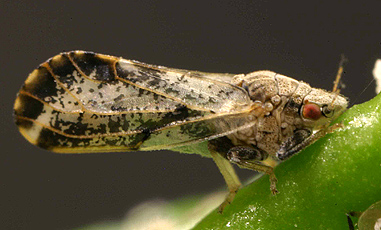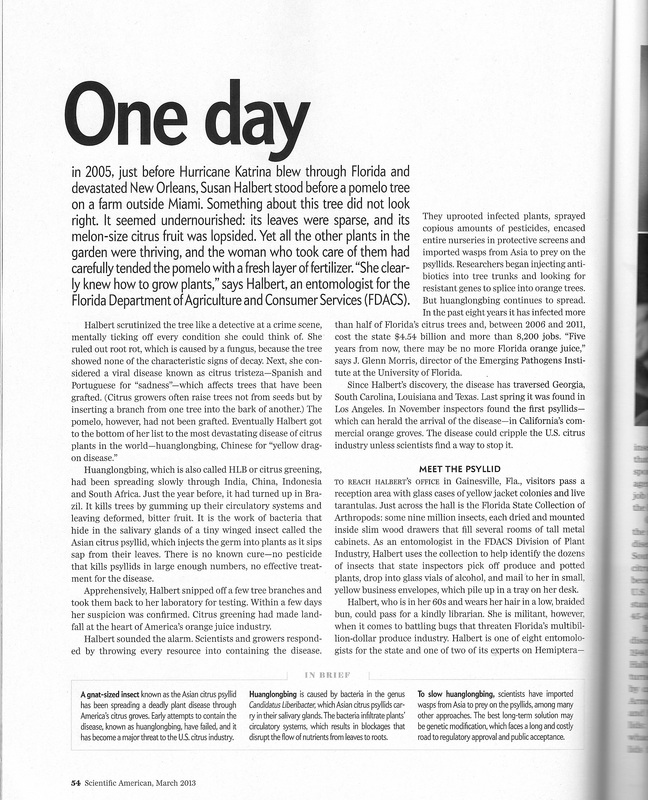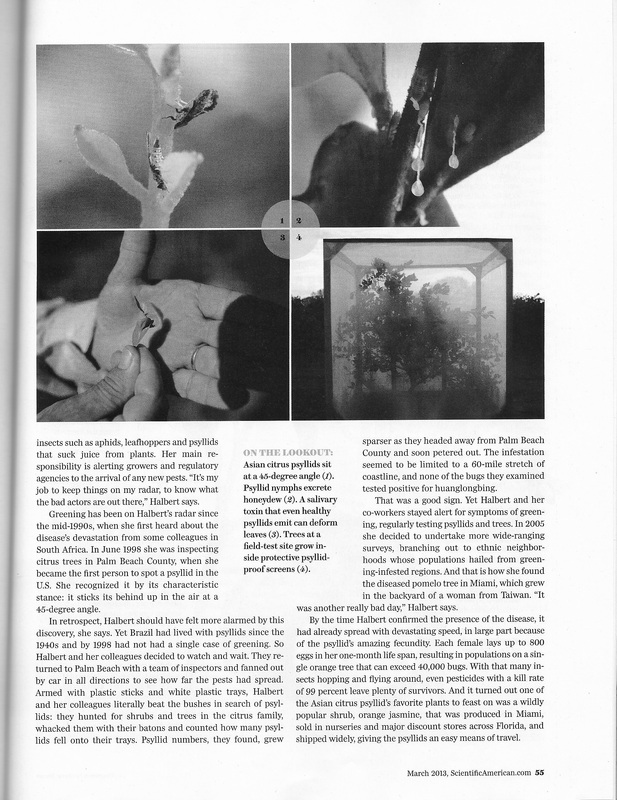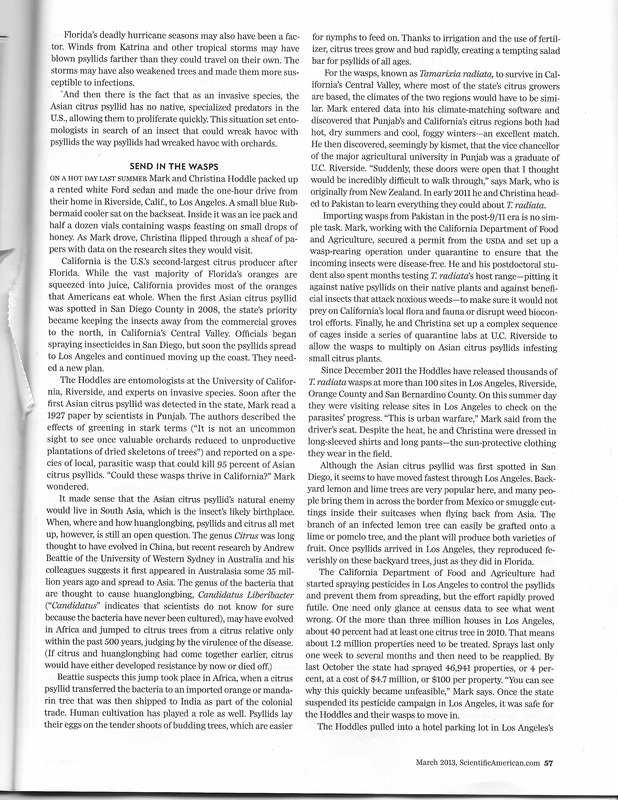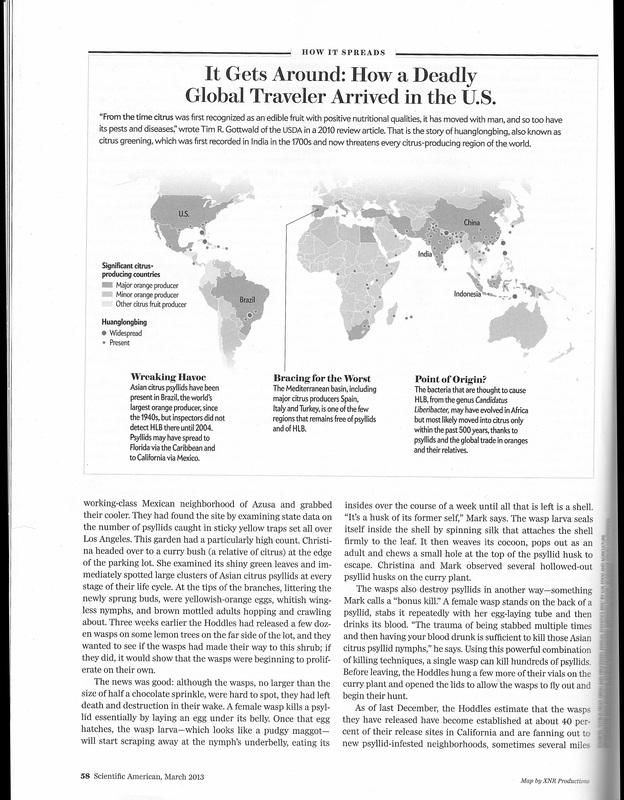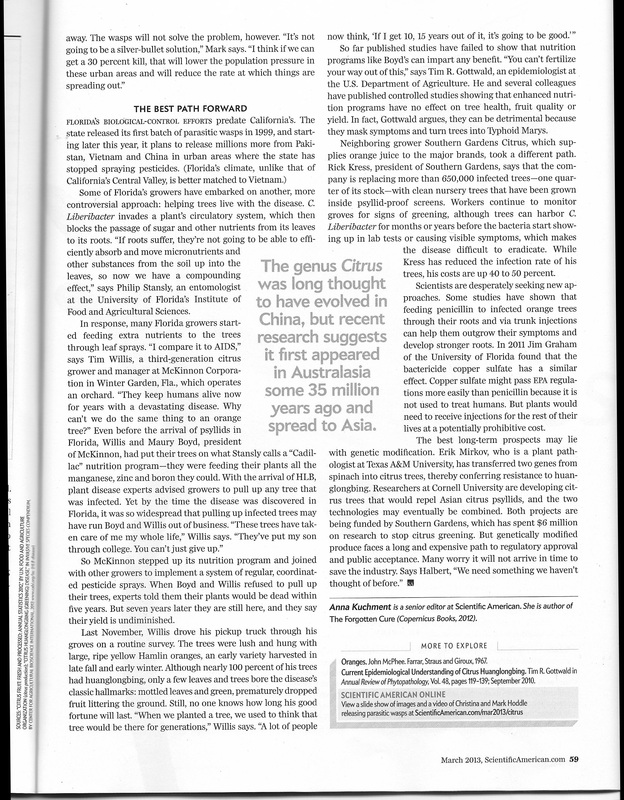“The End of Orange Juice”
Anna Kuchment
March 2013
Scientific American
Anna Kuchment
March 2013
Scientific American
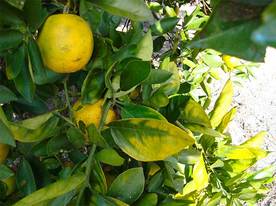
I chose this article because it is a pressing problem that affects a lot of people, farmers and consumers alike.
-Huanglongbing-Huanglongbing is a citrus disease caused by a pathogen.
-Asian citrus psyllid- The Asian citrus psyllid is an insect that injects the pathogen into the plant when it sips sap from a plant’s leaf.
-Tamaraxia radiata- An example of a purposely introduced invasive species, this type of wasp kills the psyllids that harm citrus trees.
This article describes how an invasive species, the Asian citrus psyllid, is harming citrus trees by causing deformed and bitter fruit. Pesticides are not effective enough and there is no treatment for the disease making the situation difficult to manage. One solution that is being used is to introduce a type of wasp that will kill the Asian citrus psyllid. This wasp from Asia kills the psyllid by laying an egg on the psyllid and when the wasp larva hatches it will begin to scrape and eat the psyllid. Other solutions have been presented such as the injection of penicillin or copper sulfate into the plants’ roots. One of the most permanent solutions would be genetically modifying the citrus trees but this is also a very controversial solution.
This article displays a problem not only in the present but also in the future and the article displays the need for immediate action. We should take more steps towards preventing the spread of invasive species as soon as they are discovered. While introducing the wasp and genetically modifying the trees may be effective solutions, we must also consider the effects our solutions will have on the environment and if those solutions will have any unintended consequences.
-Huanglongbing-Huanglongbing is a citrus disease caused by a pathogen.
-Asian citrus psyllid- The Asian citrus psyllid is an insect that injects the pathogen into the plant when it sips sap from a plant’s leaf.
-Tamaraxia radiata- An example of a purposely introduced invasive species, this type of wasp kills the psyllids that harm citrus trees.
This article describes how an invasive species, the Asian citrus psyllid, is harming citrus trees by causing deformed and bitter fruit. Pesticides are not effective enough and there is no treatment for the disease making the situation difficult to manage. One solution that is being used is to introduce a type of wasp that will kill the Asian citrus psyllid. This wasp from Asia kills the psyllid by laying an egg on the psyllid and when the wasp larva hatches it will begin to scrape and eat the psyllid. Other solutions have been presented such as the injection of penicillin or copper sulfate into the plants’ roots. One of the most permanent solutions would be genetically modifying the citrus trees but this is also a very controversial solution.
This article displays a problem not only in the present but also in the future and the article displays the need for immediate action. We should take more steps towards preventing the spread of invasive species as soon as they are discovered. While introducing the wasp and genetically modifying the trees may be effective solutions, we must also consider the effects our solutions will have on the environment and if those solutions will have any unintended consequences.

